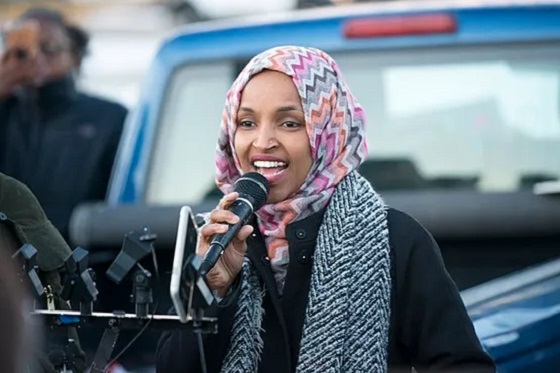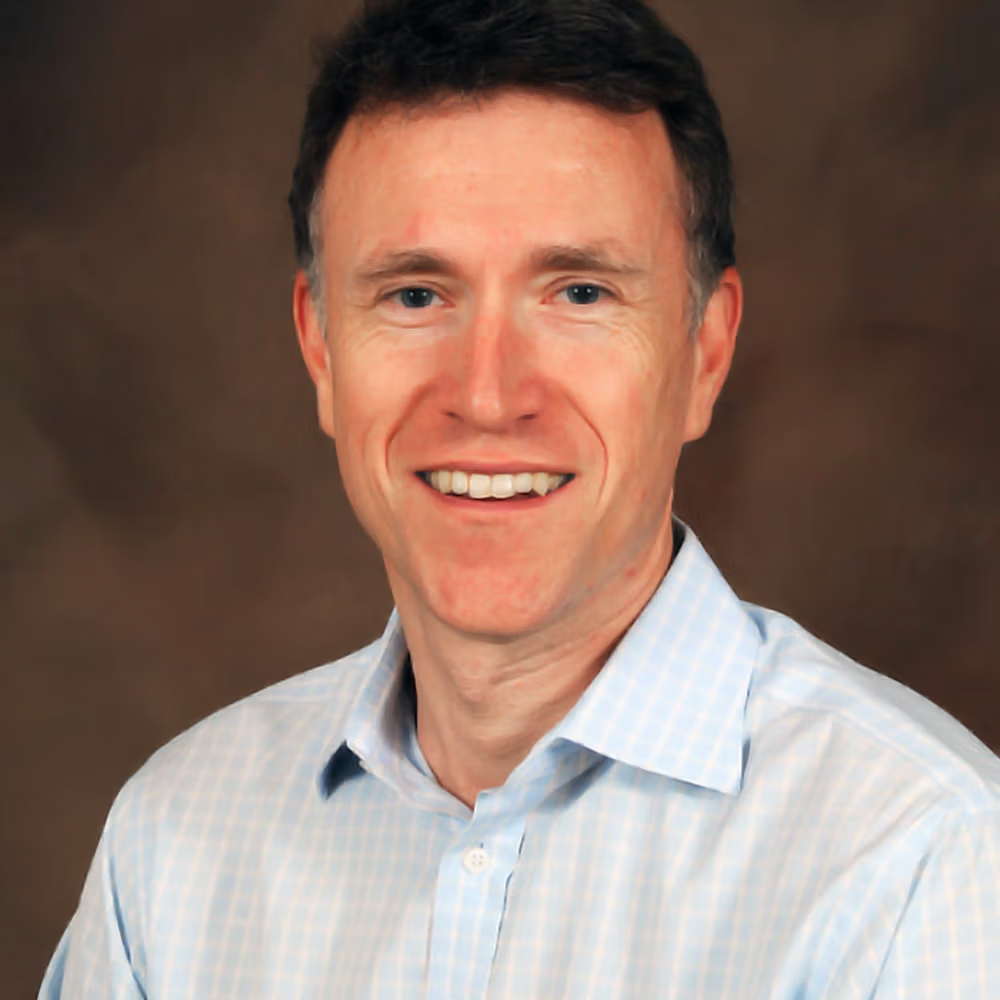Addictions
London Police Chief warns parliament about “safer supply” diversion

London Police Chief Thai Truong testifies to House of Commons Standing Committee on November 26, 2024.
By Adam Zivo
“Vulnerable individuals are being targeted by criminals who exchange these prescriptions for fentanyl, exacerbating addiction and community harm,” said London Police Chief Thai Truong.
Thai Truong, the police chief of London, Ontario, testified in parliament last week that “safer supply” opioids are “obviously” being widely diverted to the black market, leading to greater profits for organized crime. His insights further illustrate that the safer supply diversion crisis is not disinformation, as many harm reduction advocates have speciously claimed.
Truong’s testimony was given to the House of Commons Standing Committee on Health, which is in the midst of an extended study into the opioid crisis. While the committee has heard from dozens of witnesses, Truong’s participation was particularly notable, as safer supply was first piloted in London in 2016 and the city has, since then, been a hotbed for opioid diversion.
“While the program is well intentioned, we are seeing concerning outcomes related to the diversion of safe supply medications… these diverted drugs are being resold within our community, trafficked to other jurisdictions, and even used as currency to obtain fentanyl, perpetuating the illegal drug trade,” he said in his opening speech. “Vulnerable individuals are being targeted by criminals who exchange these prescriptions for fentanyl, exacerbating addiction and community harm.”
He later clarified to committee members that these vulnerable individuals include women who are being pressured to obtain safer supply opioids for black market resale.
Safer supply programs are supposed to provide pharmaceutical-grade addictive drugs – mostly 8-mg tablets of hydromorphone, an opioid as potent as heroin – as an alternative to riskier street substances. The programs generally supply these drugs at no cost to recipients, with almost no supervised consumption, and have a strong preference for Dilaudid, a brand of hydromorphone that is manufactured by Purdue Pharma.
Addiction experts and police leaders across Canada have reported that safer supply patients regularly divert their hydromorphone to the black market. A recent study by Dr. Brian Conway, director of Vancouver’s Infectious Disease Centre, for example, showed that a quarter of his safer supply patients diverted all of their hydromorphone, and that another large, but unknown, percentage diverted at least some of their pills.
Truong’s parliamentary testimony, which mostly rehashed information he shared in a press conference last July, further corroborated these concerns.
He noted that in 2019, the city’s police force seized 847 hydromorphone pills, of which only 75 were 8-mg Dilaudids. Seizures increased after access to safer supply expanded in 2020, and, by 2023, exploded to over 30,000 pills (a roughly 3,500 per cent increase), of which roughly half were 8-mg Dilaudids. During this period, the number of annual overdose deaths in the city also increased from 73 to 123 (a 68 per cent increase), he said.
Relatedly, Truong noted that the price of hydromorphone in London – $2-5 a pill – is now much lower than in other parts of the province.
As an increasing number of police departments across Canada have publicly acknowledged that they are seeing skyrocketing hydromorphone seizures, some safer supply advocates have claimed, without evidence, that these pills were mostly stolen from pharmacies, and not diverted by safer supply patients. Truong’s parliamentary testimony dispelled this myth: “These increases cannot be attributed to pharmacy thefts, as London has had only one pharmacy robbery since 2019.”
The police chief declined to answer repeated questions about the efficacy of safer supply, or to opine on whether the experimental program should be replaced with alternative interventions with stronger evidence bases. “I’m not here to criticize the safe supply program, but to address the serious challenges associated with its diversion,” he said, noting his own lack of medical expertise.
The chief emphasized that, while more needs to be done to stop safer supply diversion, the addiction crisis is a “complex issue” that cannot be tackled solely through law enforcement. He advocated for a “holistic” approach that integrates prevention, harm reduction and treatment, and acknowledged the importance of London’s community health and social service partners.
Our content is always free. Subscribe to get BTN’s latest news and analysis,
or donate to our journalism fund.
In response to Truong’s testimony, NDP MP Gord Johns, an avid safer supply advocate, downplayed the importance of the diversion crisis by arguing that “people aren’t dying from a safer supply of drugs; they’re dying from fentanyl.”
While it is true that 81 per cent of overdose deaths in 2024 involved fentanyl, addiction physicians across Canada have repeatedly debunked Johns’ argument as misleading. The dangers of diverted hydromorphone is not that it directly kills users, but rather that it easily hooks individuals into addiction, leading many of them to graduate to deadly fentanyl use.
Johns previously faced criticism when, in a September health committee meeting, he seemingly used parliamentary maneuvers to reduce the speaking time of a grieving father, Greg Sword, whose daughter, Kamilah, died of drug-related causes after she and her friends got hooked on diverted hydromorphone.
There is currently no credible evidence that safer supply works. Most supporting studies simply interview safer supply patients and present their opinions as objective fact, despite significant issues with bias and reliability. Data presented in a 2024 study published in the British Medical Journal, which followed over 5,000 drug users in B.C., showed that safer supply led to no statistically significant mortality reductions once confounding factors were fully filtered out.
An impending update to Canada’s National Opioid Use Disorder Guideline, which was recently presented at a conference organized by the Canadian Society of Addiction Medicine, determined that the evidence base for safer supply is “essentially low-level.” Similarly, B.C’s top doctor acknowledged earlier this year that safer supply is “not fully evidence-based.”
This article was syndicated in The Bureau, an online media publication that investigates foreign interference, organized crime, and the drug trade.
Addictions
Coffee, Nicotine, and the Politics of Acceptable Addiction

From the Brownstone Institute
By
Every morning, hundreds of millions of people perform a socially approved ritual. They line up for coffee. They joke about not being functional without caffeine. They openly acknowledge dependence and even celebrate it. No one calls this addiction degenerate. It is framed as productivity, taste, wellness—sometimes even virtue.
Now imagine the same professional discreetly using a nicotine pouch before a meeting. The reaction is very different. This is treated as a vice, something vaguely shameful, associated with weakness, poor judgment, or public health risk.
From a scientific perspective, this distinction makes little sense.
Caffeine and nicotine are both mild psychoactive stimulants. Both are plant-derived alkaloids. Both increase alertness and concentration. Both produce dependence. Neither is a carcinogen. Neither causes the diseases historically associated with smoking. Yet one has become the world’s most acceptable addiction, while the other remains morally polluted even in its safest, non-combustible forms.
This divergence has almost nothing to do with biology. It has everything to do with history, class, marketing, and a failure of modern public health to distinguish molecules from mechanisms.
Two Stimulants, One Misunderstanding
Nicotine acts on nicotinic acetylcholine receptors, mimicking a neurotransmitter the brain already uses to regulate attention and learning. At low doses, it improves focus and mood. At higher doses, it causes nausea and dizziness—self-limiting effects that discourage excess. Nicotine is not carcinogenic and does not cause lung disease.
Caffeine works differently, blocking adenosine receptors that signal fatigue. The result is wakefulness and alertness. Like nicotine, caffeine indirectly affects dopamine, which is why people rely on it daily. Like nicotine, it produces tolerance and withdrawal. Headaches, fatigue, and irritability are routine among regular users who skip their morning dose.
Pharmacologically, these substances are peers.
The major difference in health outcomes does not come from the molecules themselves but from how they have been delivered.
Combustion Was the Killer
Smoking kills because burning organic material produces thousands of toxic compounds—tar, carbon monoxide, polycyclic aromatic hydrocarbons, and other carcinogens. Nicotine is present in cigarette smoke, but it is not what causes cancer or emphysema. Combustion is.
When nicotine is delivered without combustion—through patches, gum, snus, pouches, or vaping—the toxic burden drops dramatically. This is one of the most robust findings in modern tobacco research.
And yet nicotine continues to be treated as if it were the source of smoking’s harm.
This confusion has shaped decades of policy.
How Nicotine Lost Its Reputation
For centuries, nicotine was not stigmatized. Indigenous cultures across the Americas used tobacco in religious, medicinal, and diplomatic rituals. In early modern Europe, physicians prescribed it. Pipes, cigars, and snuff were associated with contemplation and leisure.
The collapse came with industrialization.
The cigarette-rolling machine of the late 19th century transformed nicotine into a mass-market product optimized for rapid pulmonary delivery. Addiction intensified, exposure multiplied, and combustion damage accumulated invisibly for decades. When epidemiology finally linked smoking to lung cancer and heart disease in the mid-20th century, the backlash was inevitable.
But the blame was assigned crudely. Nicotine—the named psychoactive component—became the symbol of the harm, even though the damage came from smoke.
Once that association formed, it hardened into dogma.
How Caffeine Escaped
Caffeine followed a very different cultural path. Coffee and tea entered global life through institutions of respectability. Coffeehouses in the Ottoman Empire and Europe became centers of commerce and debate. Tea was woven into domestic ritual, empire, and gentility.
Crucially, caffeine was never bound to a lethal delivery system. No one inhaled burning coffee leaves. There was no delayed epidemic waiting to be discovered.
As industrial capitalism expanded, caffeine became a productivity tool. Coffee breaks were institutionalized. Tea fueled factory schedules and office routines. By the 20th century, caffeine was no longer seen as a drug at all but as a necessity of modern life.
Its downsides—dependence, sleep disruption, anxiety—were normalized or joked about. In recent decades, branding completed the transformation. Coffee became lifestyle. The stimulant disappeared behind aesthetics and identity.
The Class Divide in Addiction
The difference between caffeine and nicotine is not just historical. It is social.
Caffeine use is public, aesthetic, and professionally coded. Carrying a coffee cup signals busyness, productivity, and belonging in the middle class. Nicotine use—even in clean, low-risk forms—is discreet. It is not aestheticized. It is associated with coping rather than ambition.
Addictions favored by elites are rebranded as habits or wellness tools. Addictions associated with stress, manual labor, or marginal populations are framed as moral failings. This is why caffeine is indulgence and nicotine is degeneracy, even when the physiological effects are similar.
Where Public Health Went Wrong
Public health messaging relies on simplification. “Smoking kills” was effective and true. But over time, simplification hardened into distortion.
“Smoking kills” became “Nicotine is addictive,” which slid into “Nicotine is harmful,” and eventually into claims that there is “No safe level.” Dose, delivery, and comparative risk disappeared from the conversation.
Institutions now struggle to reverse course. Admitting that nicotine is not the primary harm agent would require acknowledging decades of misleading communication. It would require distinguishing adult use from youth use. It would require nuance.
Bureaucracies are bad at nuance.
So nicotine remains frozen at its worst historical moment: the age of the cigarette.
Why This Matters
This is not an academic debate. Millions of smokers could dramatically reduce their health risks by switching to non-combustion nicotine products. Countries that have allowed this—most notably Sweden—have seen smoking rates and tobacco-related mortality collapse. Countries that stigmatize or ban these alternatives preserve cigarette dominance.
At the same time, caffeine consumption continues to rise, including among adolescents, with little moral panic. Energy drinks are aggressively marketed. Sleep disruption and anxiety are treated as lifestyle issues, not public health emergencies.
The asymmetry is revealing.
Coffee as the Model Addiction
Caffeine succeeded culturally because it aligned with power. It supported work, not resistance. It fit office life. It could be branded as refinement. It never challenged institutional authority.
Nicotine, especially when used by working-class populations, became associated with stress relief, nonconformity, and failure to comply. That symbolism persisted long after the smoke could be removed.
Addictions are not judged by chemistry. They are judged by who uses them and whether they fit prevailing moral narratives.
Coffee passed the test. Nicotine did not.
The Core Error
The central mistake is confusing a molecule with a method. Nicotine did not cause the smoking epidemic. Combustion did. Once that distinction is restored, much of modern tobacco policy looks incoherent. Low-risk behaviors are treated as moral threats, while higher-risk behaviors are tolerated because they are culturally embedded.
This is not science. It is politics dressed up as health.
A Final Thought
If we applied the standards used against nicotine to caffeine, coffee would be regulated like a controlled substance. If we applied the standards used for caffeine to nicotine, pouches and vaping would be treated as unremarkable adult choices.
The rational approach is obvious: evaluate substances based on dose, delivery, and actual harm. Stop moralizing chemistry. Stop pretending that all addictions are equal. Nicotine is not harmless. Neither is caffeine. But both are far safer than the stories told about them.
This essay only scratches the surface. The strange moral history of nicotine, caffeine, and acceptable addiction exposes a much larger problem: modern institutions have forgotten how to reason about risk.
Addictions
Manitoba Is Doubling Down On A Failed Drug Policy

From the Frontier Centre for Public Policy
Manitoba is choosing to expand the same drug policy model that other provinces are abandoning, policies that normalize addiction while sidelining treatment, recovery, and public safety.
The New Democrat premier of British Columbia, David Eby, stood before reporters last spring and called his government’s decision to permit public drug use in certain spaces a failure.
The policy was part of the broader “harm reduction” strategy meant to address overdose deaths. Instead, it had stirred public anger, increased street disorder and had helped neither users nor the communities that host them. “We do not accept street disorder that makes communities feel unsafe,” Eby said. The province scrapped the plan.
In Alberta, the Conservative government began shutting down safer-supply prescribing due to concerns about drug diversion and misuse. The belief that more opioids can resolve the opioid crisis is losing credibility.
Ontario Progressive Conservatives are moving away from harm reduction by shutting down supervised consumption sites near schools and limiting safer-supply prescribing. Federal funding for programs is decreasing, and the province is shifting its focus to treatment models, even though not all sites are yet closed.
Yet amid these non-partisan reversals, Manitoba’s government has announced its intention to open a supervised drug-use site in Winnipeg. Premier Wab Kinew said, “We have too many Manitobans dying from overdose.” True. But it does not follow that repeating failed approaches will yield different results.
Reversing these failed policies is not a rejection of compassion. It is a recognition that good intentions do not produce good outcomes. Vancouver and Toronto have hosted supervised drug-use sites for years. The death toll keeps rising. Drug deaths in British Columbia topped 2,500 in 2023, even with the most expansive harm reduction infrastructure in the country. A peer-reviewed study published this year found that hospitalizations from opioid poisoning rose after B.C.’s safer-supply policy was implemented. Emergency department visits increased by more than three cases per 100,000 population, with no corresponding drop in fatal overdoses.
And the problem persists day to day. Paramedics in B.C. responded to nearly 4,000 overdose calls in July 2024 alone. The monthly call volume has exceeded 3,000 almost every month this year. These are signs of crisis management without a path to recovery.
There are consequences beyond public health. These policies change the character of neighbourhoods. Businesses suffer. Residents feel unsafe. And most tragically, the person using drugs is offered little more than a cot, a nurse and a quiet signal to continue. Real help, like treatment, housing and purpose, remains out of reach.
Somewhere along the way, bureaucracies stopped asking what recovery looks like. They have settled for managing human decline. They call it compassion. But it is really surrender, wrapped in medical language.
Harm reduction had its time. It made sense when it first emerged, during the AIDS crisis, when dirty needles spread HIV. Back then, the goal was to stop a deadly virus. Today, that purpose has been lost.
When policy drifts into ideology, reality becomes an afterthought. Underneath today’s approach is the belief that drug use is inevitable, that people cannot change, that liberty means letting others fade away quietly. These ideas do not reflect science. They do not reflect hope. They reflect despair. They reflect a politics that prioritizes the appearance of compassion over effectiveness.
What Manitoba needs is treatment access that meets the scale of the problem. That means detox beds, recovery homes and long-term care focused on restoring lives. These may not generate the desired headlines, but they work. They are demanding. They are slow. And they offer respect to the person behind the addiction.
There are no shortcuts. No policy will undo decades of pain overnight. But a policy that keeps people stuck using is not mercy. It is maintenance with no way out.
A government that believes in its people should not copy failure.
Marco Navarro-Genie is vice-president of research at the Frontier Centre for Public Policy and co-author, with Barry Cooper, of Canada’s COVID: The Story of a Pandemic Moral Panic (2023).
-

 Business1 day ago
Business1 day agoDisclosures reveal Minnesota politician’s husband’s companies surged thousands-fold amid Somali fraud crisis
-

 Alberta1 day ago
Alberta1 day agoThe Canadian Energy Centre’s biggest stories of 2025
-

 Business2 days ago
Business2 days agoCanada needs serious tax cuts in 2026
-

 Business2 days ago
Business2 days agoDOOR TO DOOR: Feds descend on Minneapolis day cares tied to massive fraud
-

 Business1 day ago
Business1 day agoResurfaced Video Shows How Somali Scammers Used Day Care Centers To Scam State
-

 Bruce Dowbiggin2 days ago
Bruce Dowbiggin2 days agoIn Contentious Canada Reality Is Still Six Degrees Of Hockey
-

 Business1 day ago
Business1 day agoMinneapolis day care filmed empty suddenly fills with kids
-

 Business8 hours ago
Business8 hours agoThe Real Reason Canada’s Health Care System Is Failing





